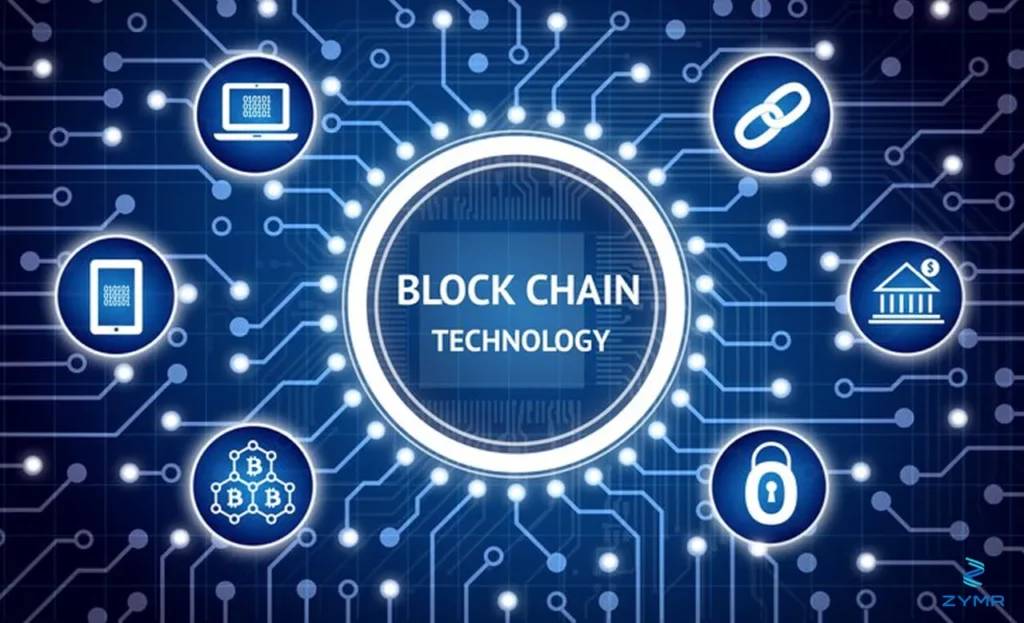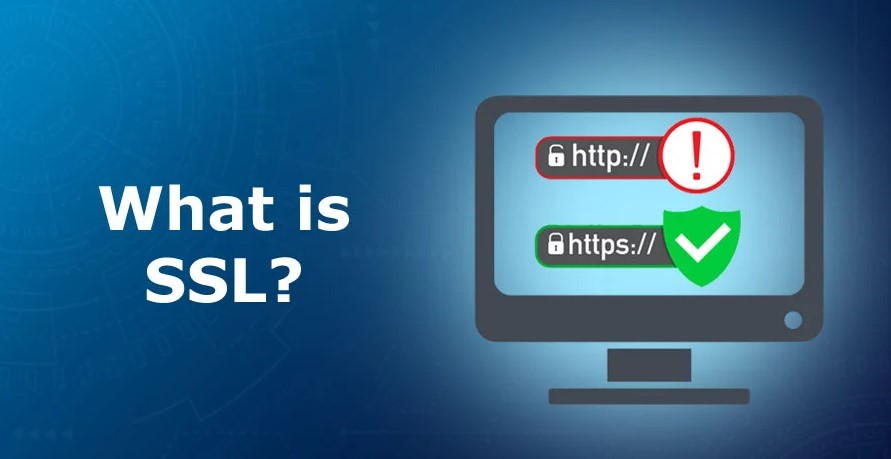The Complete Guide to Domain Names: Your Website’s Digital Address Why Your Domain Name Matters…

Integrating Blockchain Technology in Web Development
Revolutionizing Digital Experiences
In recent years, blockchain technology has emerged as a groundbreaking innovation with the potential to transform various industries, including finance, healthcare, and supply chain management. However, its impact extends beyond these domains, reaching into the realm of web development. Integrating blockchain technology in web development is creating new opportunities for enhancing security, transparency, and efficiency in digital applications. This blog post explores the exciting possibilities and practical applications of blockchain in web development, shedding light on how developers can harness this technology to build more robust and innovative web solutions.
Understanding Blockchain Technology
What is Blockchain?
At its core, blockchain is a decentralized, distributed ledger that records transactions across a network of computers. Unlike traditional databases, which are centrally controlled, a blockchain operates on a peer-to-peer network, where each participant (or node) maintains a copy of the entire ledger. Transactions are grouped into blocks, which are then cryptographically linked to form a chain. This structure ensures that once a block is added to the chain, it cannot be altered without altering all subsequent blocks, making blockchain inherently secure and tamper-resistant.
Key Features of Blockchain
To appreciate the significance of integrating blockchain technology in web development, it’s essential to understand its key features:
- Decentralization: Blockchain eliminates the need for a central authority, distributing control across a network of nodes. This decentralization enhances transparency and reduces the risk of a single point of failure.
- Immutability: Once recorded, data on a blockchain cannot be modified or deleted. This immutability ensures the integrity and permanence of records.
- Transparency: Every transaction on a blockchain is visible to all participants, promoting accountability and trust among users.
- Security: Blockchain uses cryptographic algorithms to secure data, making it highly resistant to hacking and fraud.
- Consensus Mechanisms: Blockchain relies on consensus mechanisms like Proof of Work (PoW) or Proof of Stake (PoS) to validate transactions and maintain the integrity of the ledger.
The Intersection of Blockchain and Web Development
Enhancing Security and Data Integrity
One of the most compelling reasons for integrating blockchain technology in web development is the enhanced security it offers. In traditional web applications, data is often stored in centralized databases, which are vulnerable to hacking and data breaches. Blockchain’s decentralized nature, coupled with its cryptographic security, provides a robust alternative for securing data.
For example, consider a web application that manages sensitive user information, such as financial or healthcare data. By storing this information on a blockchain, developers can ensure that the data is immutable and protected from unauthorized access. Each transaction or data entry is verified by the network and recorded in a way that prevents tampering, providing users with greater confidence in the application’s security.
Improving Transparency and Trust
Transparency is another critical advantage of integrating blockchain technology in web development. Blockchain’s transparent ledger allows all participants to view and verify transactions, fostering trust and accountability. This feature is particularly valuable in applications where transparency is crucial, such as supply chain management, voting systems, or charitable donations.
For instance, in a supply chain management web application, blockchain can provide end-to-end visibility into the movement of goods. Each step of the supply chain can be recorded on the blockchain, allowing stakeholders to trace the origin and journey of products. This transparency not only enhances trust among participants but also helps in identifying and addressing issues like counterfeiting or inefficiencies.
Enabling Decentralized Applications (DApps)
Decentralized applications, or DApps, are another significant innovation enabled by blockchain technology. Unlike traditional web applications that rely on centralized servers, DApps operate on a blockchain network, distributing data and processing power across multiple nodes. This decentralization offers several benefits, including enhanced security, censorship resistance, and reduced downtime.
Ethereum, one of the most popular blockchain platforms, allows developers to create DApps using smart contracts—self-executing contracts with the terms directly written into code. These smart contracts automate various processes, eliminating the need for intermediaries and reducing operational costs. Examples of DApps include decentralized finance (DeFi) platforms, gaming applications, and peer-to-peer marketplaces.
Streamlining Identity Verification and Authentication
Identity verification and authentication are critical components of many web applications, particularly those dealing with sensitive or financial information. Traditional methods often involve passwords and centralized identity providers, which can be cumbersome and vulnerable to breaches. Integrating blockchain technology in web development offers a more secure and efficient approach to identity management.
Blockchain-based identity systems use cryptographic techniques to create secure, verifiable digital identities. Users can control their identity data and share it selectively with service providers. This approach not only enhances security but also streamlines the verification process, reducing friction for users. For example, Civic and Sovrin are blockchain platforms that offer decentralized identity solutions, allowing users to manage their identities securely across multiple applications.
Facilitating Secure Payments and Transactions
Blockchain technology is perhaps best known for its role in enabling secure and efficient financial transactions through cryptocurrencies like Bitcoin and Ethereum. However, its applications in web development go beyond cryptocurrencies. Integrating blockchain technology in web development can streamline payment processes, reduce transaction fees, and enable cross-border transactions without intermediaries.
For e-commerce platforms, integrating blockchain-based payment systems can offer customers more options and enhance security. Smart contracts can automate payment processing and escrow services, ensuring that transactions are executed only when predefined conditions are met. Additionally, blockchain’s decentralized nature allows for instant settlement of transactions, reducing delays and costs associated with traditional banking systems.
Practical Applications of Blockchain in Web Development
Decentralized Content Management
Traditional content management systems (CMS) are centralized, relying on servers to store and deliver content. Blockchain offers a decentralized alternative that can enhance the security and availability of content. By distributing content across a network of nodes, blockchain-based CMS can provide greater resilience against censorship and downtime.
For example, integrating blockchain technology in web development for content management can benefit news websites, blogs, and social media platforms. Blockchain ensures that content is immutable and traceable, providing a verifiable record of publications. Platforms like Steemit and LBRY use blockchain to enable content creators to publish and monetize their work without relying on centralized intermediaries.
Secure Voting Systems
Voting systems are another area where blockchain technology can make a significant impact. Traditional electronic voting systems are often criticized for their lack of transparency and susceptibility to tampering. Blockchain’s transparent and immutable ledger can address these concerns by providing a secure and verifiable record of votes.
Integrating blockchain technology in web development for voting applications can enhance the integrity of elections and increase voter confidence. Blockchain ensures that each vote is recorded accurately and cannot be altered or deleted. Several projects, such as Voatz and Horizon State, are already exploring the use of blockchain for secure and transparent voting systems.
Transparent Supply Chain Solutions
Supply chain management involves tracking the movement of goods from manufacturers to consumers. Traditional supply chain systems often suffer from a lack of transparency and inefficiencies. Blockchain technology offers a solution by providing a transparent and immutable record of each step in the supply chain.
By integrating blockchain technology in web development, businesses can create supply chain applications that offer end-to-end visibility and traceability. Blockchain can record detailed information about products, including their origin, manufacturing process, and transportation. This transparency helps in identifying and addressing issues like counterfeiting, fraud, and delays. IBM’s Food Trust and Maersk’s TradeLens are examples of blockchain-based supply chain solutions that enhance transparency and efficiency.
Decentralized Marketplaces
Traditional online marketplaces are centralized platforms that facilitate transactions between buyers and sellers. While convenient, they often involve high fees and centralized control over transactions. Blockchain enables the creation of decentralized marketplaces that operate without intermediaries, reducing costs and increasing transparency.
Integrating blockchain technology in web development for marketplaces allows for peer-to-peer transactions directly between users. Smart contracts can automate the execution of transactions, ensuring that payments and deliveries occur as agreed. Platforms like OpenSea for digital art and Origin Protocol for e-commerce are examples of decentralized marketplaces leveraging blockchain technology to create more efficient and transparent trading environments.
Blockchain for IoT Security
The Internet of Things (IoT) connects billions of devices, enabling seamless communication and automation. However, this connectivity also introduces security risks, as each connected device can become a potential entry point for cyberattacks. Blockchain technology offers a solution by providing a secure and decentralized way to manage IoT devices and data.
Integrating blockchain technology in web development for IoT applications can enhance security and trust in connected systems. Blockchain can record and verify IoT transactions, ensuring that data from devices is accurate and tamper-proof. Additionally, smart contracts can automate interactions between devices, creating a secure and efficient IoT ecosystem. Projects like IOTA and Helium are exploring the use of blockchain to secure and manage IoT networks.
Challenges and Considerations in Integrating Blockchain Technology
Scalability Issues
One of the primary challenges of integrating blockchain technology in web development is scalability. Blockchain networks can become slow and inefficient as the number of transactions increases. This limitation can impact the performance of web applications, particularly those with high transaction volumes.
To address scalability issues, developers can explore various solutions, such as off-chain transactions, layer 2 protocols, and sharding. These techniques aim to reduce the load on the main blockchain network, improving transaction speeds and scalability. Ethereum’s transition to Ethereum 2.0 and the implementation of the Lightning Network for Bitcoin are examples of efforts to enhance blockchain scalability.
Regulatory and Legal Concerns
Blockchain technology operates in a complex regulatory landscape, with varying legal implications across different jurisdictions. Integrating blockchain technology in web development requires careful consideration of compliance with data protection laws, financial regulations, and intellectual property rights.
Developers must stay informed about the regulatory environment and ensure that their applications adhere to relevant laws and guidelines. Collaborating with legal experts and maintaining transparency with users can help navigate the regulatory challenges associated with blockchain technology.
User Experience and Adoption
While blockchain offers numerous benefits, it can also introduce complexities that impact user experience. For example, managing private keys for blockchain transactions can be challenging for non-technical users. Additionally, the decentralized nature of blockchain may require users to adapt to new ways of interacting with applications.
To facilitate user adoption, developers should focus on creating intuitive and user-friendly interfaces. Simplifying processes like key management and providing clear guidance on using blockchain features can enhance the overall user experience. Educating users about the benefits and security of blockchain can also help build trust and encourage adoption.
The Future of Blockchain in Web Development
Evolving Standards and Protocols
As blockchain technology continues to evolve, new standards and protocols are emerging to address its challenges and expand its capabilities. Innovations like cross-chain interoperability, improved consensus mechanisms, and enhanced privacy features are paving the way for more versatile and scalable blockchain applications.
Integrating blockchain technology in web development will benefit from these advancements, enabling developers to build more robust and efficient web solutions. Staying abreast of these developments and adopting best practices will be crucial for leveraging the full potential of blockchain in web development.
Increased Integration with Emerging Technologies
Blockchain’s synergy with other emerging technologies, such as artificial intelligence (AI), the Internet of Things (IoT), and edge computing, holds tremendous potential for creating innovative web applications. Combining blockchain with AI can enhance data analysis and decision-making, while integrating it with IoT can secure and streamline device interactions.
As these technologies continue to mature, integrating blockchain technology in web development will open up new possibilities for creating intelligent, connected, and secure digital ecosystems. Exploring these intersections will be key to staying at the forefront of technological innovation.
Broader Adoption Across Industries
The adoption of blockchain technology is expanding beyond its initial focus on finance and cryptocurrencies. Industries such as healthcare, real estate, logistics, and entertainment are increasingly exploring blockchain’s potential to improve operations and create new business models.
For web developers, this broader adoption means more opportunities to apply blockchain in diverse contexts. By understanding the unique requirements and challenges of different industries, developers can tailor blockchain solutions to meet specific needs and drive innovation across various sectors.
Conclusion: Embracing the Future of Web Development with Blockchain
The integration of blockchain technology in web development is revolutionizing the way we build and interact with digital applications. From enhancing security and transparency to enabling decentralized applications and streamlining identity verification, blockchain offers a wealth of opportunities for creating more robust and innovative web solutions.
While challenges such as scalability, regulatory compliance, and user experience remain, the continued evolution of blockchain technology and its integration with other emerging technologies promise to address these issues and unlock new possibilities. By staying informed about the latest trends and best practices in integrating blockchain technology in web development, developers can harness the full potential of this transformative technology to create secure, efficient, and forward-thinking web applications.
As we look to the future, embracing blockchain’s capabilities will be essential for staying at the forefront of web development and delivering digital experiences that are not only cutting-edge but also trustworthy and resilient. Whether you’re a developer, entrepreneur, or business leader, now is the time to explore how blockchain can elevate your web development projects and drive innovation in the digital age.



